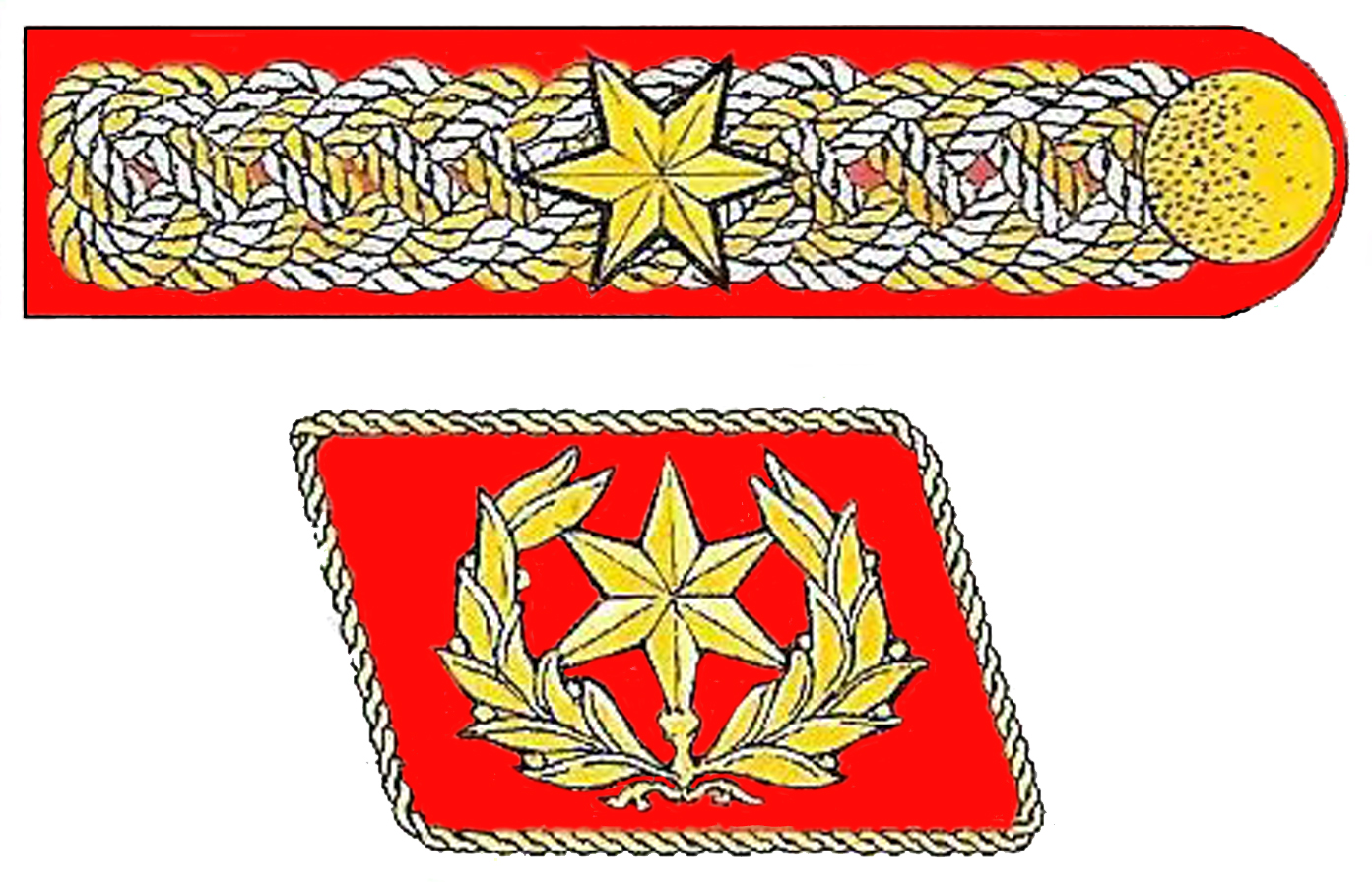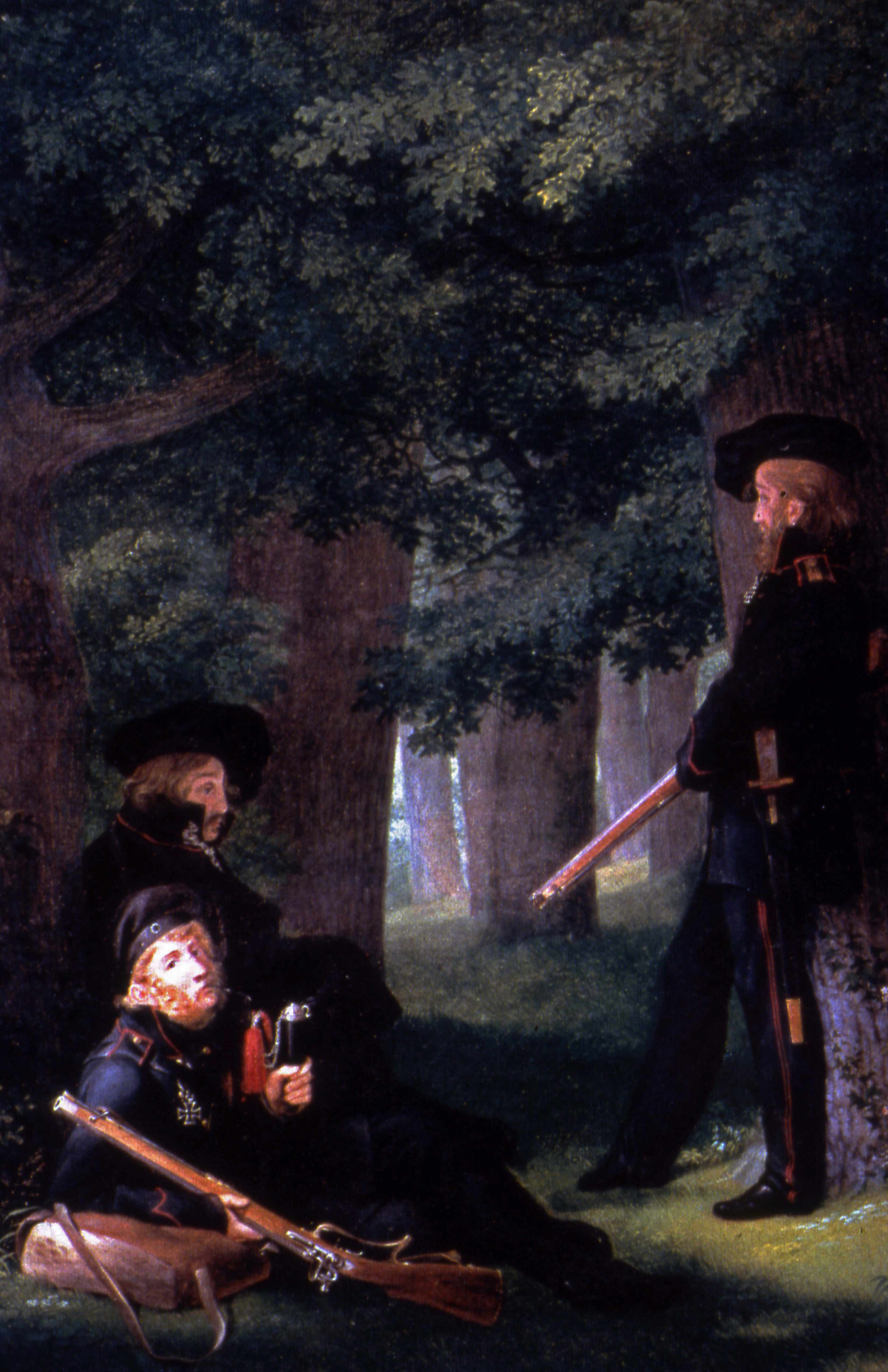|
Sturmabteilung
The (; SA; or 'Storm Troopers') was the original paramilitary organisation under Adolf Hitler and the Nazi Party of Germany. It played a significant role in Adolf Hitler's rise to power, Hitler's rise to power in the 1920s and early 1930s. Its primary purposes were providing protection for Nazi rallies and assemblies, disrupting the meetings of opposing parties, fighting against the paramilitary units of the opposing parties, especially the ''Roter Frontkämpferbund'' of the Communist Party of Germany (KPD) and the ''Reichsbanner Schwarz-Rot-Gold'' of the Social Democratic Party of Germany (SPD), and intimidating Romani people, Romani, trade unionists, and especially Jews. The SA were colloquially called Brownshirts () because of the colour of their Uniforms and insignia of the Sturmabteilung, uniform's shirts, similar to Benito Mussolini's Blackshirts. The official uniform of the SA was a brown shirt with a brown tie. The color came about because a large shipment of Paul von ... [...More Info...] [...Related Items...] OR: [Wikipedia] [Google] [Baidu] |
Uniforms And Insignia Of The Sturmabteilung
The uniforms and insignia of the ''Sturmabteilung'' ( SA) were Nazi Party paramilitary ranks and uniforms used by SA stormtroopers from 1921 until the fall of Nazi Germany in 1945. The titles and phrases used by the SA were the basis for paramilitary titles used by several other Nazi paramilitary groups, among them the ''Schutzstaffel'' (SS). Early SS ranks were identical to the SA, since the SS was originally considered a sub-organisation of the ''Sturmabteilung''. Origins of SA titles (1921–1923) The brown shirted stormtroopers of the ''Sturmabteilung'' gradually come into being within the Nazi Party beginning in 1920. By this time, Adolf Hitler had assumed the title of ''Führer'' of the Nazi Party, replacing Anton Drexler who had been known as the more democratically elected Party Chairman. Hitler began to fashion the Nazi Party on fascist paramilitary lines and, to that end, the early Nazis of the 1920s would typically wear some sort of paramilitary uniform at party meet ... [...More Info...] [...Related Items...] OR: [Wikipedia] [Google] [Baidu] |
Beer Hall Putsch
The Beer Hall Putsch, also known as the Munich Putsch,Dan Moorhouse, ed schoolshistory.org.uk, accessed 2008-05-31.Known in German as the or was a failed coup d'état by Nazi Party leader Adolf Hitler, Erich Ludendorff and other leaders in Munich, Bavaria, on , during the period of the Weimar Republic. Approximately two thousand Nazis marched on the , in the city centre, but were confronted by a police cordon, which resulted in the deaths of 15 Nazis, four police officers, and one bystander. Hitler escaped immediate arrest and was spirited off to safety in the countryside. After two days, he was arrested and charged with treason. The putsch brought Hitler to the attention of the German nation for the first time and generated front-page headlines in newspapers around the world. His arrest was followed by a 24-day trial, which was widely publicised and gave him a platform to express his nationalist sentiments. Hitler was found guilty of treason and sentenced to five years i ... [...More Info...] [...Related Items...] OR: [Wikipedia] [Google] [Baidu] |
Supreme SA Leader
The supreme SA leader (), was the titular head of the Nazi Party's paramilitary group, the (SA). History The ''Sturmabteilung'' (SA) was the original paramilitary organisation under Adolf Hitler and the Nazi Party of Germany. It played a significant role in Hitler's rise to power in the 1920s and early 1930s. Its primary purposes were providing protection for Nazi rallies and assemblies, disrupting the meetings of opposing parties, fighting against the paramilitary units of the opposing parties, especially the '' Roter Frontkämpferbund'' of the Communist Party of Germany (KPD) and the ''Reichsbanner Schwarz-Rot-Gold'' of the Social Democratic Party of Germany (SPD), and intimidating Romani, trade unionists, and especially Jews. To centralise the loyalty of the SA, Hitler personally assumed command of the entire organisation in 1930 and remained for the duration of the group's existence. After 1931, those who held the rank of (Chief of staff), such as Ernst Röhm, were accepte ... [...More Info...] [...Related Items...] OR: [Wikipedia] [Google] [Baidu] |
Stabschef
(, ) was an office and paramilitary rank in the (SA), the paramilitary stormtroopers associated with the Nazi Party. It was a rank and position held by the operating chief of the SA. The rank was equivalent to the rank of in the German Army and to General in the U.S. Army. Definition The position of , not yet a rank, was established in 1929 to assist the (Supreme SA Leader) with the administration of the fast-growing organisation. Otto Wagener held the office under Franz Pfeffer von Salomon from 1928 to 1930, and effectively headed the SA from Hitler's assumption of the title in August until Ernst Röhm replaced him in January 1931. The actual SA rank of was created by Röhm for himself in 1933 after Hitler became chancellor. Although Hitler became the supreme commander of the SA in 1930, the day-to-day running of the organisation was left to the chief of staff. Thus, the men who held the rank of after 1930 were the actual leaders of the SA. Office holders The office ... [...More Info...] [...Related Items...] OR: [Wikipedia] [Google] [Baidu] |
Kristallnacht
( ) or the Night of Broken Glass, also called the November pogrom(s) (, ), was a pogrom against Jews carried out by the Nazi Party's (SA) and (SS) paramilitary forces along with some participation from the Hitler Youth and German civilians throughout Nazi Germany on 9–10 November 1938. The German authorities looked on without intervening.German Mobs' Vengeance on Jews", ''The Daily Telegraph'', 11 November 1938, cited in The euphemistic name comes from the shards of broken glass that littered the streets after the windows of Jewish-owned stores, buildings, and synagogues were smashed. The pretext for the attacks was the assassination, on 9 November 1938, of the German diplomat Ernst vom Rath by Herschel Grynszpan, a 17-year-old German-born Polish Jew living in Paris. Jewish homes, hospitals and schools were ransacked as attackers demolished buildings with sledgehammers. Rioters destroyed over 1,400 synagogues and prayer rooms throughout Germany, Austria, and the Su ... [...More Info...] [...Related Items...] OR: [Wikipedia] [Google] [Baidu] |
Reichsbanner Schwarz-Rot-Gold
The (, , simply in short) was an organization in Weimar Republic, Germany during the Weimar Republic with the goal to defend German parliamentary democracy against internal subversion and extremism from the left and right and to compel the population to respect and honour the new Republic's Flag of Germany, flag and Weimar Constitution, constitution. It was formed by members of the left-wing Social Democratic Party of Germany (SPD), the centre-right to right-wing Centre Party (Germany), German Centre Party, and the centrist-liberal German Democratic Party in February 1924. Organized militarily, the members wanted to ensure non-violent protection from the enemies of democracy. They refused to arm themselves, but were partly made up of veterans. Its name is derived from the Flag of Germany adopted in 1919, the colours of which were associated with the Weimar Republic and liberal German nationalism, and, as it happens, the traditional party colours of its three founding partie ... [...More Info...] [...Related Items...] OR: [Wikipedia] [Google] [Baidu] |
Nazi Party
The Nazi Party, officially the National Socialist German Workers' Party ( or NSDAP), was a far-right politics, far-right political party in Germany active between 1920 and 1945 that created and supported the ideology of Nazism. Its precursor, the German Workers' Party (; DAP), existed from 1919 to 1920. The Nazi Party emerged from the Extremism, extremist German nationalism, German nationalist ("Völkisch nationalism, ''Völkisch'' nationalist"), racism, racist, and populism, populist paramilitary culture, which fought against communism, communist uprisings in post–World War I Germany. The party was created to draw workers away from communism and into nationalism. Initially, Nazi political strategy focused on anti-big business, anti-bourgeoisie, and anti-capitalism, disingenuously using socialist rhetoric to gain the support of the lower middle class; it was later downplayed to gain the support of business leaders. By the 1930s, the party's main focus shifted to Antisemit ... [...More Info...] [...Related Items...] OR: [Wikipedia] [Google] [Baidu] |
Freikorps
(, "Free Corps" or "Volunteer Corps") were irregular German and other European paramilitary volunteer units that existed from the 18th to the early 20th centuries. They effectively fought as mercenaries or private military companies, regardless of their own nationality. In German-speaking countries, the first so-called ("free regiments", ''Freie Regimenter'') were formed in the 18th century from native volunteers, enemy renegades, and deserters. These sometimes exotically equipped units served as infantry and cavalry (or, more rarely, as artillery); sometimes in just company strength and sometimes in formations of up to several thousand strong. There were also various mixed formations or legions. The Prussian included infantry, jäger, dragoons and hussars. The French '' Volontaires de Saxe'' combined uhlans and dragoons. In the aftermath of World War I and during the German Revolution of 1918–19, , consisting partially of World War I veterans, were raised as para ... [...More Info...] [...Related Items...] OR: [Wikipedia] [Google] [Baidu] |
Gerhard Roßbach
Gerhard Roßbach (28 February 1893 – 30 August 1967), also spelled Rossbach, was a German '' Freikorps'' leader and nationalist political activist during the interwar period. Born in Kehrberg, Pomerania, he gained prominence for his involvement in various right-wing paramilitary groups following World War I and in particular for his close association with Hitler's impresario into the upper echelons of the demobilized Imperial German Army, Ernst Röhm. He is generally credited with inventing the brown uniforms of the Nazi Party after supplying surplus tropical khaki shirts to early troops of the ''Sturmabteilung'' (SA). Waite, who produced the early historical standard on the subject of the Freikorps movement, writes (ironically) of Roßbach that, "The true Landsknechte Freebooter'type which the National Socialists were later to extol as the possessor of 'the moral strength of the race,' is personified in Gerhard Roßbach the notorious Free Corps leader who became th ... [...More Info...] [...Related Items...] OR: [Wikipedia] [Google] [Baidu] |
Der Stahlhelm, Bund Der Frontsoldaten
''Der Stahlhelm, Bund der Frontsoldaten'' (German: 'The Steel Helmet, League of Front-Line Soldiers'), commonly known as ''Der Stahlhelm'' ('The Steel Helmet') or ''Stahlhelm BdF'' ('D.S. BdF'), was a Revanchism, revanchist Veteran, ex-serviceman's association formed in Weimar Republic, Germany after the World War I, First World War. Dedicated to preserving the camaraderie and sacrifice of German frontline soldiers, it quickly evolved into a highly politicised force of ultranationalist resistance, opposed to the democratic ideals, democratic values of the Weimar Republic. By the 1920s, ''Der Stahlhelm'' had become a mass movement with hundreds of thousands of members, ideologically aligned with ''Völkisch movement, völkisch''-nationalist currents: anti-Marxism, anti-Marxist, Antisemitism, anti-Semitic, determined to reverse the Treaty of Versailles, but distinguished from Adolf Hitler, Hitler's Nazi Party, National Socialists by their support for a House of Hohenzollern, Hoh ... [...More Info...] [...Related Items...] OR: [Wikipedia] [Google] [Baidu] |
Blackshirts
The Voluntary Militia for National Security (, MVSN), commonly called the Blackshirts (, CCNN, singular: ) or (singular: ), was originally the paramilitary wing of the National Fascist Party, known as the Squadrismo, and after 1923 an all-volunteer militia of the Kingdom of Italy under Fascist Italy, Fascist rule, similar to the Sturmabteilung, SA. Its members were distinguished by their black uniforms (modelled on those of the ''Arditi'', Italy's elite troops of World War I) and their loyalty to Benito Mussolini, the ''Duce'' (leader) of Italian Fascism, Fascism, to whom they swore an oath. The founders of the paramilitary groups were nationalist intellectuals, former army officers and young landowners opposing peasants' and country labourers' unions. Their methods became harsher as Mussolini's power grew, and they used violence and intimidation against Mussolini's opponents.Bosworth, R.J.B. (2005). ''Mussolini's Italy: Life Under the Fascist Dictatorship, 1915–1945'' (Peng ... [...More Info...] [...Related Items...] OR: [Wikipedia] [Google] [Baidu] |






